SLPs Putting Knowledge into Practice: Maximize Patient Outcomes Through Comprehensive Strategies, Innovative Tools, and Fresh New Insight – Angela Mansolillo and Others
Original price was: $299.99.$87.00Current price is: $87.00.
SLPs Putting Knowledge into Practice: Maximize Patient Outcomes Through Comprehensive Strategies, Innovative Tools, and Fresh New Insight – Angela Mansolil…
Salepage link: At HERE. Archive:
Experience the self-study online course created from the most inspiring & engaging event of the year with the leading experts, researchers, and developers in the field!
As an SLP, we often become overwhelmed, anxious, and stressed with the burden of high caseloads and lack of materials.
Oh, and let’s not forget about paperwork…Ugh, the paperwork!
It’s hard to find time to integrate new strategies, resources, and techniques that can help overcome these burdens.
That is why we curated this one-of-a-kind innovative online learning experience — just for busy SLPs like you.
When you sign up for this online course, you will join 9 of the leading experts in the field as they walk you through ten 90-minute consumable sessions that provide the most innovative resources, strategies, and fresh new insights to maximize your outcomes with your patients starting immediately.
Join like-minded peers from around the globe right from the comfort of your office, couch, or even hiding in the bathroom from your kids (guilty)…
… and finish this course feeling connected to a larger team working toward a common goal.
One of the best parts of being an SLP in the ability to work with lots of specialties in many settings. That is why you will leave this online conference armed with concrete strategies and takeaways for ACEs, behavioral interventions, pediatric feeding, autism, stroke, aphasia, dysphagia, dementia, and more!
So don’t wait…get the take-home solutions you’re craving. Plus, earn up to 38.5 CE Hours when you register today!
Strategies! Strategies! Strategies!
Hear from 9 leading experts in the field as they give you the proven methods and techniques you’ve been waiting for: easily digestible information you’ll implement in your practice right away. And just watch your patient outcomes improve.
This course will energize you.
Find your community here — where SLP professionals have put their trust.
Learn side by side with like-minded peers from around the globe as you all enjoy that feeling of connectedness.
And if that’s not enough, lock in the chance to receive up to 38.5 CE Hours when you register today.
Is this online course right for you?
Whether you work with children or adults — or in a rehab facility, hospital, or school, you’ll find your home here. Discover the latest research and practical applications for: telehealth, pediatric feeding, stroke, autism, early intervention, aphasia, dysphagia, Parkinson’s, ACEs, dementia, behavioral intervention, diversity, ethics, video modeling, and more!
It’s never been so easy!
But this special enrollment is limited. Sign up today to engage in this once-in-a-lifetime SLP experience.
And we’ll see you inside.
Full Course Description
Adapting Pediatric Feeding Therapy for the Clinic, Home, School, and Online – Not Just the Kitchen Table
Program Information
Objectives
Upon completion of this program, participants will be able to:
- Determine the challenges and advantages of a variety of feeding environments including school, home, clinic, and online settings.
- Utilize two strategies to ensure safe feeding/swallowing in educational settings.
- Implement three strategies to facilitate carryover from medical/clinic to home feeding environments.
- Conduct effective tele-therapy sessions with children with feeding and swallowing disorders.
Outline
Feeding Environments
- Where, what, and with whom?
- Challenges and environments
There’s No Place Like Home
- Early Feeding Intervention at the kitchen table
School-Based Feeding Therapy
- Yes, it is educationally relevant
Medical Settings
- The challenge of carryover
Making Teletherapy Work
- We’re all Zooming now!
Ethnographic Interviewing: Assessment Strategies for Culturally & Linguistically Diverse Needs
Program Information
Objectives
Participants will be able to:
- Assess the role of ethnographic interviewing in evidence-based practice and the International Classification of Functioning.
- Conduct an ethnographic interview to inform the clinician’s choice of treatment.
- Analyze interview data to establish intervention goals and objectives to improve client engagement.
Outline
Foundations for Clinical Assessment and Intervention
- Evidence-based practice (EBP) framework
- International Classification of Functioning framework
Ethnographic Question Types – Asking the Right Question in the Right Way
- Descriptive questions to help clients describe experiences, daily activities, objects, and people
- Grand tour and mini tour
- Example, experience, and native language
- Structural questions to determine relationships among ideas
Building Rapport
- Stages of rapport
- Problematic questions
- Questioning that facilitates rapport
Social Dimensions
- What they are
- Why to identify
Analyzing the Interview Data
- Domain analysis
- Identifying barriers and facilitators
- Determining strengths and needs
- Setting goals and objectives
Video demonstrations are woven throughout presentation to show the types questions/interactions
Video Modeling to Teach Authentic Communication and Connection
Program Information
Objectives
- Determine appropriate methods of video modeling for various settings and client/patient/student needs.
- Integrate video modeling with traditional communication techniques to accelerate effectiveness and enhance carryover and skill maintenance.
- Employ available technologies you already have for recording, viewing, editing, and sharing videos with patients right away.
- Execute and maintain privacy and HIPPA regulations to protect the integrity of persons and settings captured in the videos.
Outline
Why use video modeling
- Interest
- Authenticity
- Improved focus and skill development
Types of Video Modeling
- Others, POV, self, hybrid
- Choosing which method to use
- Weak and strong outcomes
Not just watching
- Must also include passive and active engagement (mediated learning and doing)
- Carryover and latency (spontaneous use of learned skills)
- Memory and learning
How to integrate video modeling in various settings for different client/student needs
- Identify goals and skills to target
- Video examples and discussion
- Pairing with traditional communication techniques
Parkinson’s and the SLP: Treatment Approaches for Voice, Speech, Language, Cognition and Other Issues
Program Information
Objectives
- Evaluate key areas of cognitive dysfunction associated with Parkinson’s and potential implications upon communication.
- Investigate core features of Parkinson’s with respect to communication deficits and swallowing dysfunction and relevant treatment approaches for each.
- Employ computer and/or smart phone-based technologies that can be employed by the speech language pathologist to help improve speech and voice in patients with Parkinson’s.
Outline
Hallmarks of Parkinson’s-Speech
- Quiet voice/hypophonia
- Sloppy articulation – excess noise due to frication
- Visualization of the vocal folds
Treatment Approaches
- LSVT LOUD (formally Lee Silverman Voice Therapy)
- SPEAK OUT (Parkinson’s Voice Project)
- PLVT (Pitch Limited Voice Therapy)
- Apps
Articulation Difficulties & Fluency Disorders
- Parkinson’s Swallowing
- Drooling and risk for swallowing dysfunction
- Potential impacts for each stage of swallowing
- Emerging tools and other possible ways to help
- Other interventions with strong evidence
Cognition – The Intersection of Language and Cognition
- Influence of other cognitive domains
- Attention
- Set shifting
- Disinhibition
- Executive function
Stop Challenging Behaviors from Derailing Therapy: 7 Must-Have Interventions for Clients of All Ages and Diagnoses
Program Information
Objectives
- Differentiate the application of applied behavior analysis in feeding and swallowing; traumatic brain injury; learning disabilities; and ADHD.
- Apply methods of data collection and preference assessments to enhance client interaction and treatment progress across a spectrum of diagnoses.
- Employ the use of behavior interventions cross the pediatric and adult client population.
- Analyze client behavior to better understand the purpose or why of the client challenging behavior being presented.
Outline
Applications of ABA for Challenging Behaviors Related to:
- Traumatic Brain Injury (TBI)
- Cerebral Palsy (CP)
- Attention Deficit Hyperactivity Disorder (ADHD)
- Feeding and Swallowing
- Learning Disabilities (LD)
- Stroke
- Dementia
Antecedent Behavior Interventions: Enhance Client Interaction and Treatment Progress
- Best practices for pediatric and adult clients
- Preference assessments
- Data collection and client interactions as tools for analysis
Understanding Client Behavior as an Essential Clinical Skill
- The ‘purpose or why’ of the client challenging behavior
- Environmental variables that impact client behavior
Clinical Scenarios
- Client with TBI with verbal aggression or obstinate behavior
- Client with identified learning disability and ADHD
Social Effectiveness: Strategies for Clinic, Home, and School
Program Information
Objectives
- Articulate the signs attributed to foundational deficits in Theory of Mind, Central Coherence, and Executive Function.
- Implement treatment strategies designed to improve cognitive thinking, misinterpretation, and poor planning.
- List the signs of deficiencies in your client’s social interaction, social communication, and social regulation.
- Design treatment strategies to improve play skills, pedantic speech, and anxiety.
Outline
THE “ROOTS OF SOCIAL SKILLS”: IF THE ROOTS AREN’T VIABLE, THE TREE WON’T SURVIVE
Theory of Mind
- Treatment for: Poor perspective taking, imaginative play, cognitive thinking
- Strategies:
- The Zone (Kowalski, 2010)
- Comic Strip Conversations and Social Stories
- Barrier and detective games
Central Coherence: Seeing the Forest Through the Trees
- Treatment for: Hyperliteral, “Argues”, misinterpretation
- Strategies:
- Loosey-Goosey Language
- Cognitive flexibility
- Big Picture
Executive Functions (EF): Tools for Executive Function Deficits
- Treatment for: Poor planning, problem solving, flexible thinking
- Strategies:
- Imitation
- Contingency statements
- Stroop-like tasks
THE SOCIAL TRIAD
Social Interaction
- Treatment for: Naïve, poor play skills, obsessive interests
- Strategies:
- Structured play groups
- Social autopsies
- Social cause-effect
Social Communication
- Treatment for: Pedantic speech, difficulty with conversation, poor nonverbal communication
- Strategies:
- Visual strategies
- Grice’s Maxims
- Expansion and Repair
Social-Emotional Regulation and Emotional Intelligence: EQ
- Treatment for: Easily stressed, anxious, ritualistic
- Strategies:
- Recognizing emotions in yourself and others (prosopagnosia)
- Language of emotions (alexithymia)
- Forget About It Box
Dysphagia and Medication Management – A Hard Pill to Swallow
Program Information
Objectives
Upon completion of this program, participants will be able to…
- Determine three potential medication modifications for people with dysphagia and their consequences.
- Analyze three common medication side effects that can impact swallow function.
- Devise three strategies for improving swallow safety during medication administration.
- Implement three strategies to reduce medication errors in individuals with dysphagia.
Outline
Pill/Tablet Swallow Physiology
- What happens when we swallow a pill?
Issues in Administration for People with Swallowing Disorders
- Medication type – liquids, tablets and capsules
- Potential for medication errors
- Altering medications – easier to swallow but is it really safer?
Medication Induced Dysphagia
- Neurological impacts
- GI impacts
- Impact on salivation, dry mouth
Interventions
- Compensations and maneuvers – making swallowing easier
- Improving dry mouth
- Sensory interventions
- Reducing medication errors related to dysphagia
- New directions – changes in formulations for easier swallowing
Bilingual Parent Coaching in Early Intervention Settings
Program Information
Objectives
- Apply professional knowledge to child’s needs and modify it according to family culture, language, and desires for ethical service delivery in early intervention.
- Integrate a hybrid approach (in-person and telehealth settings) for bilingual and multicultural parent coaching and education.
- Possess and create developmentally and linguistically appropriate materials and resources to use the next day.
Outline
Parent and Therapist roles in Early Intervention Bilingual homes
- Different language, different culture, different expectations
- Terms to consider when describing yourself and your clients: Proficient, fluent, native, non-native, English Language Learner, Dual-language Learner, etc.
- Common hurdles and complaints
I am not Fluently Bilingual/Multilingual. What are My Options?
- Ethical considerations
- Use of interpreters (professional, friends of family, family members)
- Become the student investigator; be willing to learn; trust your skills
Parent Coaching
- Who is my client, the child or the family?
- Case examples with video demonstrations
- Prepare children and families for future language use
End the Blame Game
- Disability, difference, or disadvantage?
- Adapt the environment or the expectation?
- Prevent further need for interventions for the school-aged child
Do This not That
- Choose wisely: good sessions or better communication?
- Active engagement and home practice success
- Case studies, video examples, and discussion
Stroke and Aphasia: Breaking Down Barriers to Access Mental Health Services
Program Information
Objectives
- Employ quality of life and depression screening tools for post-stroke patients.
- Investigate counseling skills and limitations as they apply to SLPs.
- Evaluate strategies to overcome avoidance behaviors that decrease the likelihood of receiving mental health services in patients with aphasia.
Outline
Impairments Following Stroke: Impact on Quality of Life and Depression
- Stroke aphasia and quality of life
- Stroke aphasia and major depressive disorder
- Internal risk factors of post-stroke depression
Quality of Life and Depression Screening Tools: Purpose, Administration, Scoring and Interpretation
- Stroke and Aphasia Quality of Life Scale-39 Generic
- Geriatric Depression Scale
- Stroke Aphasic Depression Questionnaire
Counseling and Counseling Skills
- Counseling role of the SLP
- Limits of counseling by the rehabilitation professional
- When and how to refer to a behavioral health professional
- Barriers to counseling and possible strategies and solutions
Autism Identification: How Early is too Early
Program Information
Objectives
- Assess for subtle differences in neurotypical and at-risk infants for purposes of parent/family psychoeducation.
- Analyze ‘red flags’ found in young children who are at-risk for autism to inform clinical assessment and treatment planning.
- Determine symptoms and behavioral patterns of infants and toddlers at risk for a diagnosis of ASD.
- Employ specific clinical strategies/techniques to reduce and replace challenging behaviors inherent to autism.
Outline
Screening and Identification
- ‘Red Flags’ of Autism Spectrum Disorder (ASD)
- Subtle differences in neurotypical and at-risk infants
- Characteristics and behavioral patterns found in infants and toddlers at risk for ASD
- Magic and pitfalls of questionnaires
- Questions to anticipate from family members
Treatment/Strategies
- Increase the child’s overall learning trajectory
- Preventing the development of secondary behavioral patterns
- Consider a ‘new look’ at “stimming”
- How to approach reduced engagement
- Turning hyper-focusing behaviors into an asset
- How replacement behaviors can help and what’s behind repetitive behaviors
Case Studies for Screening, Assessment and Treatment
- 3-year-old who turned vomiting into a successful career
- 2.5-year old 24/7 head banger and what helped him turn the corner
- Music ‘saves a child’s life’
- Sometimes, silence is the best form of ‘communication’!
Children with Adverse Childhood Experiences (ACEs): Interventions for the Caregiver & Child
Program Information
Objectives
- Determine the effects of adverse childhood experiences on children’s language and social-emotional development
- Develop caregiver-child interventions that promote attunement/affect management
- Implement strategies to promote resiliency and language for personal narratives/self-regulation
Outline
ACEs and Development
- Types of ACEs
- Biological/neurological effects
- How attachment mediates trauma
- Autobiographical memory
- Narratives in parents & children who have experienced ACEs
- Framework for intervention
Interventions that Promote Attunement/Affect Management
- Goals for caregiver intervention
- Recognizing temperaments
- How children respond to danger
- Using mindfulness and mindsight in responding to children’s behaviors
Promote Resiliency for Personal Narratives and Self-Regulation
- Aspects of self-identity to develop
- Childhood competencies to development
- Characteristics of reminiscing
- How to reminisce
- Develop child’s emotional understanding: emotion coaching, reading body cues, recognizing emotions in stories
Rehab Strategies for Patients with Tracheostomies & Ventilators
Program Information
Objectives
- Describe steps to assess both vent and nonevent dependent patients for speaking valve utilization
- Identify contraindications for use and safety measures for successful placement of a speaking valve during acute and long-term rehabilitation
- Recognize at least three unique aspiration risks for the tracheotomized patient and three ways in which a speaking valve positively impacts swallowing physiology
- Explain three mechanical vent settings for which a speaking valve can be safely used in the tracheotomized patient
Outline
When Should You Use a Speaking Valve?
- Patient assessment
- Equipment and placement options
Successful Placement of a Speaking Valve during Acute & Long-term Rehabilitation
- Contraindications for use and safety measures
- Impact of speaking valve upon voicing and communication success
- Problem-solving strategies for difficult placements
Unique Risks & Solutions
- Overcoming aspiration risks
- Impact of swallowing physiology
- Research and case studies
Safe Use of Mech
Here's an overview of the prominent keywords and a list of famous authors:
Business and Sales: Explore business strategies, sales skills, entrepreneurship, and brand-building from authors like Joe Wicks, Jillian Michaels, and Tony Horton.
Sports and Fitness: Enhance athleticism, improve health and fitness with guidance from experts like Shaun T, Kayla Itsines, and Yoga with Adriene.
Personal Development: Develop communication skills, time management, creative thinking, and enhance self-awareness from authors like Gretchen Rubin, Simon Sinek, and Marie Kondo.
Technology and Coding: Learn about artificial intelligence, data analytics, programming, and blockchain technology from thought leaders like Neil deGrasse Tyson, Amy Cuddy, and Malcolm Gladwell.
Lifestyle and Wellness: Discover courses on holistic health, yoga, and healthy living from authors like Elizabeth Gilbert, Bill Nye, and Tracy Anderson.
Art and Creativity: Explore the world of art, creativity, and painting with guidance from renowned artists like Bob Ross and others.
All the courses on WSOlib are led by top authors and experts in their respective fields. Rest assured that the knowledge and skills you acquire are reliable and highly applicable.
Specification: SLPs Putting Knowledge into Practice: Maximize Patient Outcomes Through Comprehensive Strategies, Innovative Tools, and Fresh New Insight – Angela Mansolillo and Others
|
User Reviews
Only logged in customers who have purchased this product may leave a review.

Original price was: $299.99.$87.00Current price is: $87.00.



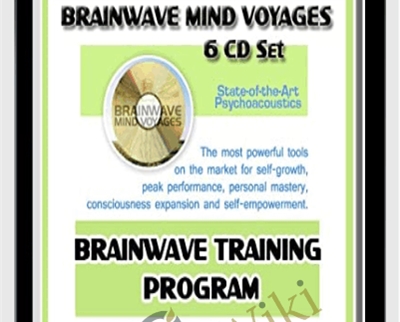
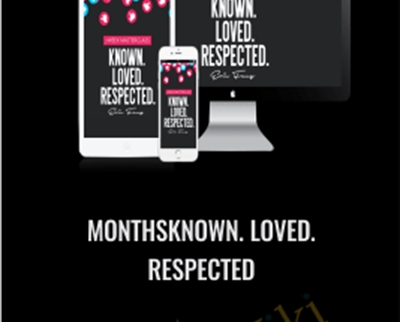
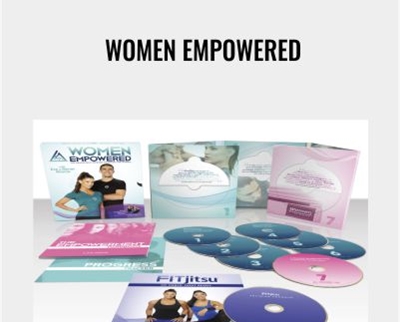
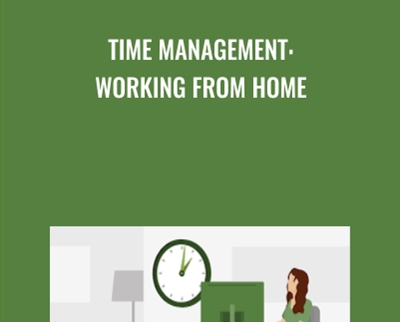
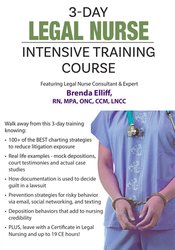
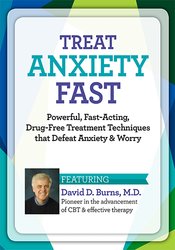
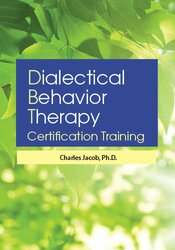
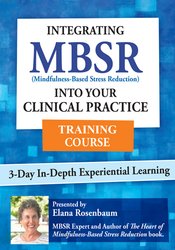
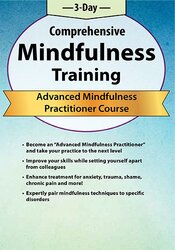
There are no reviews yet.